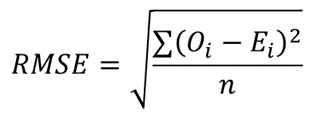Hi,
Over the last weeks I regularly ended up with the following issue:
"I need that very specific resistor value, how can I achieve it with what I have in stock?"
Short story:
I ended up writing a tool which is available here: RADIX Studio - RPick
Step 1 : select what you have in stock
Step 2 : enter your "target value" (ie. what value you need), then click the button
Step 3 : the tool will propose the closest values you can achieve using 2 or 3 resistors (in series, parallel, 2 in parallel + 1 in series or 2 in series in parallel with 1.
Long story:
Initially the tool was a genetic algorithm, iterating from generations to generations, trying to get closer to the value.
I ended up realizing that the tool was finding a close value super fast. Thus I wrote a very dumb brute-force algorithm (test every possibiliy) and... it just works instantly.
Our machines are now too powerful, the fun is gone!
A similar tool may eventually be available somewhere else, but I was not able to find it, so if mine can be useful, enjoy!
Over the last weeks I regularly ended up with the following issue:
"I need that very specific resistor value, how can I achieve it with what I have in stock?"
Short story:
I ended up writing a tool which is available here: RADIX Studio - RPick
Step 1 : select what you have in stock
Step 2 : enter your "target value" (ie. what value you need), then click the button
Step 3 : the tool will propose the closest values you can achieve using 2 or 3 resistors (in series, parallel, 2 in parallel + 1 in series or 2 in series in parallel with 1.
Long story:
Initially the tool was a genetic algorithm, iterating from generations to generations, trying to get closer to the value.
I ended up realizing that the tool was finding a close value super fast. Thus I wrote a very dumb brute-force algorithm (test every possibiliy) and... it just works instantly.
Our machines are now too powerful, the fun is gone!
A similar tool may eventually be available somewhere else, but I was not able to find it, so if mine can be useful, enjoy!




